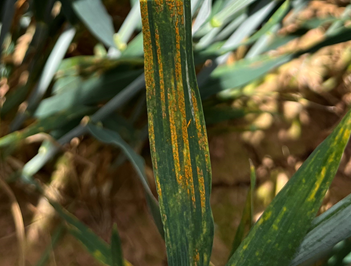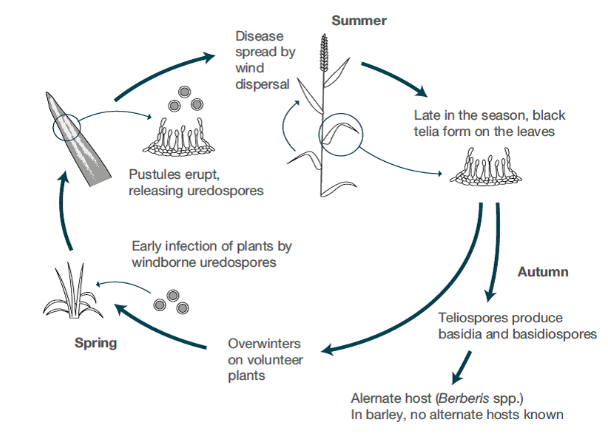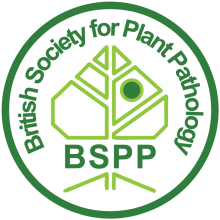Damage and Economic Importance
Infections of yellow rust can reduce yields by up to 50% in untreated, susceptible crops, due to reduced green leaf area (GLA) and enhanced water-loss from diseased leaves. This reduces the plant’s ability to photosynthesise and therefore ability to produce energy for growth, reducing yields.
Yellow rust can be found in wheat, barley and triticale and the disease is more prevalent in the east but can be found across all the UK. Current news regarding the development of new races of yellow rust in UK regions can be seen using the AHDB UKCPVS site. The use of varietal resistance alongside well-timed fungicide sprays are usually effective in limiting yellow rust damage.
Appearance and Lifecycle
Appearance
Infections usually start in the autumn, when the characteristic yellow pustules start to appear. Starting with small individual pustules scattered randomly on young leaves they can be hard to distinguish from brown rust. On adult plants, pustule formations then elongate into larger, more obvious parallel stripes on the leaf (see image below). Initial small patches of disease (foci) can establish over winter and, in untreated crops, will expand in the spring and rapidly spread to the entire field if left untreated.

Infected leaves become more chlorotic (yellow) and then necrotic (dead) in May/June, with the right weather conditions. With severe infections, pustules can infect the ear, with masses of spores forming on the grain.
Lifecycle

Management Recommendations
Variety:
Selecting a resistant variety is one of the main actions to reduce prevalence of yellow rust in cereals. Finding one that matches individual grower’s requirements shouldn’t be hard to do, with AHDB’s 2022 Recommended List listing 22 varieties with a resistance rating of 8 or 9.
Diversification of varieties is advised so that not all varieties grown on a farm will be susceptible to the same races of rust, as different strains have arrived in Europe from parts of Asia in the past few years. Juvenile plant resistance (up to stem elongation) may be different to that of adult plant resistance, so this is something to be aware of. The AHDB Recommended List provides information only on the resistance of adult plants, as this is the most important stage for growers. For more detailed information on varietal resistance in addition to the RL, see the UK Cereal Pathogen Virulence Survey and the AHDB yellow rust Watch List.
Fungicides:
It is advised to spray as soon as disease is seen on the crop, particularly on susceptible varieties, as epidemics can take-off as early as March. In these cases, a T0 spray application is advised.
Information on current fungicide efficacy is available from the AHDB – see page 11. And in this information on Fungicide Performance.
Generally, Azoles (DMIs; e.g. prothioconazole) should be used at full label dose and mixed with other modes of action such as, SDHIs (e.g. bixafen), strobilurins (e.g. pyraclostrobin) and spiroketalmines (e.g. spiroxamine). Azoles are best used as protectants or at early stages of infection against yellow rust.
Cultural Controls:
As P. striiformis requires living plant material to survive, volunteers should be eradicated from the crop to remove the green bridge over winter.
Delaying drilling, if using susceptible varieties, can also help to reduce disease pressure. However, this should not be done with resistant varieties, as the younger wheat plants are more susceptible to infection.
Related Links
Some of the text on this page comes from Rothamsted's Croprotect web platform at https://croprotect.com/diseases/yellow-rust-of-wheat. This page is also supported by funding from The British Society for Plant Pathology (BSPP).










